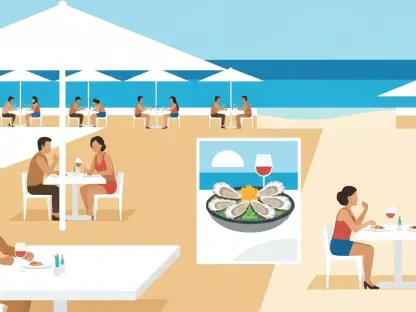Goa’s picturesque landscapes, teeming with lush greenery and cascading waterfalls, present a compelling backdrop for tourism, especially during the monsoon season. However, this allure comes with its own set of challenges, chief among them being the safety of tourists navigating the unpredictable terrains. The high number of drowning incidents at waterfalls, streams, and rivers reflects the grim reality faced by the Goa government amid its endeavor to promote the region as a year-round tourism destination. Striking a balance between welcoming visitors and ensuring their safety continues to be a formidable task, requiring diligent effort and strategic planning.
Navigating Safety Challenges in the Hinterlands
Tourist Engagement Beyond the Beaches
The vision to promote “Goa Beyond Beaches” has captivated tourists seeking exploration beyond the typical sun-and-sand experience. Yet, the allure of Goa’s hinterlands during monsoons, with its breathtaking waterfalls and dense forests, warrants scrutiny. Tourists, both domestic and international, are drawn to these regions despite the dangers posed by sudden water surges or slippery paths. The need for enhanced safety measures is paramount, as existing barricades and warning signs often fall short due to nature’s unpredictability. Government officials confront the dilemma of safeguarding these inherently dangerous sites while keeping them accessible. Strategies such as controlled access, specialized tourism marshals, and collaboration with local village communities offer promising avenues to address the concerns. These measures can prevent accidents and ensure tourists enjoy Goa’s natural beauty responsibly.
Implementing a Comprehensive Safety Framework
Despite employing temporary bans post-accidents, the approach remains reactive rather than preventative. Authorities need to adopt a comprehensive safety framework that emphasizes proactive planning and consistent implementation. This includes training local personnel as rescue teams, facilitating regular patrols, and deploying early warning systems to alert visitors to rising water levels or hazardous conditions. Recognizing the importance of local knowledge, the involvement of village communities is critical in developing safety protocols that respect both tourist interests and environmental sanctity. Discussion around permit-based or guided-access models in precarious areas is gaining traction, underscoring the shifting attitude towards risk management in tourism. Whether it involves regulated entry, stringent monitoring, or both, maintaining safety must coincide with responsible tourism practices to foster an environment where exploration is encouraged without compromising well-being.
Policy Formation and Tourist Responsibility
Bridging the Gap Between Policy and Practice
The initiative of promoting a year-round tourism hub necessitates reliable infrastructure and policy frameworks that transcend mere postings and bans. It involves reorienting current practices toward actionable safety models through coherent policy planning and enforcement. Policymakers are tasked with forging strategies that preemptively tackle potential hazards while accommodating a thriving tourist industry. The transition from reactive governance to sustainable tourism underscores this evolution. There is a pressing need to align Goa’s tourism vision with ground-level engagements, ensuring safety spans the spectrum of promotional tactics. This interconnectivity will facilitate transformation from abstract ideals to tangible, safe, and engaging experiences in Goa’s hinterlands.
Encouraging a Culture of Responsible Tourism
Tourism Minister Rohan Khaunte advocates for responsible tourism that resonates throughout governmental discourse and public sentiment. Fundamental to this ideology is cultivating awareness among tourists about risk zones and responsible behaviors. Educating visitors during their stay and equipping them with pertinent information can significantly diminish accidents resulting from ignorance or disobedience. Public campaigns, informative signage, and digital guides facilitate an informed tourist base that complements governmental safety measures. Moreover, promoting active feedback mechanisms ensures continuous engagement between tourists and authorities, enabling real-time improvements and considerations. Moving toward an inclusive and responsible tourism model is vital for harmonizing expectations, experiences, and safety within Goa.
Preparing for Future Tourism Prospects
Goa’s breathtaking landscapes, featuring abundant greenery and mesmerizing waterfalls, offer a captivating setting for tourism, particularly during the monsoon season. These natural wonders draw countless visitors eager to experience the region’s beauty. However, the enchanting scenery also presents substantial challenges, primarily revolving around tourist safety amidst unpredictable terrain. The alarming number of drowning incidents in Goa’s waterfalls, streams, and rivers paints a stark picture of the obstacles the government faces as it strives to market the area as a year-round tourist haven. Balancing the goal of attracting travelers while safeguarding their well-being is a daunting task, necessitating careful planning and proactive strategies. Officials must invest in safety measures, enforce regulations, and raise awareness among tourists to mitigate risks. As they endeavor to enhance visitor experiences, the focus on safety is crucial to realizing the vision of a thriving, secure destination throughout the year.









